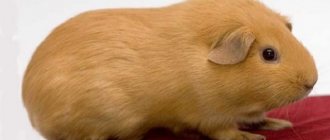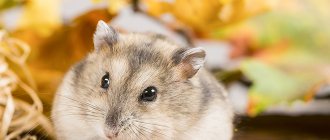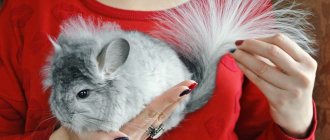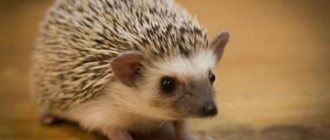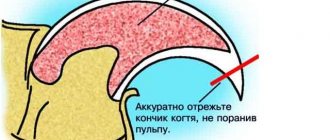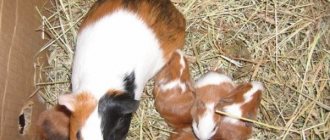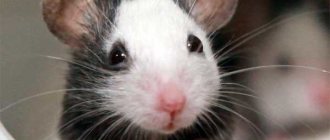In general, caring for Djungarian hamsters is not burdensome, but these animals have their own characteristics. For example, Djungarian hamsters are so sensitive that fright can cause their heart to rupture, and being on damp bedding will lead to the development of respiratory diseases. Therefore, it is better for the future owner to find out in advance what housing conditions are suitable for the dwarf and how to properly care for the pet.
Description of Djungarian hamsters
Djungarians are small rodents with an elongated body, a pointed muzzle and small five-fingered paws. They are distinguished from other breeds by their furry feet and short bushy tail.
Coat color and length
The hamster's fur is short and smooth. In nature, rodents are grayish-white in color with a dark stripe on the back.
Domesticated individuals differ from each other in different coat colors, including:
- standard - brownish-gray;
- sapphire - gray with a bluish tint;
- pearls - matte white with gray splashes;
- tangerine - reddish-cream.
Regardless of color, all jungarians have a light belly, the inside of the ears and paws.
Length and weight
Djungarians grow up to 10 cm in length. The size is the same for males and females. Animal weight - 25-75 g.
Character and lifestyle
Rodents live in steppes and semi-deserts. They are nocturnal: they hunt and gather food in the dark, and spend the day in labyrinthine burrows consisting of a sleeping nest and several chambers.
Animal shelters always have at least 2 exits so that they can escape in case of danger.
Both wild and domesticated hamsters are territorial and, when in close proximity to their own kind, experience stress, which causes fights. But with people, Djungarians are quite friendly and easy to tame.
Lifespan
Under natural conditions, the lifespan of the animal does not exceed 2.5 years. Pet rodents, if well cared for, can live up to 3 years.
About the characteristics of the breed
The Djungarian hamster is recognized by its characteristic dark stripe located in the middle of its back. The variegation and white speckles make the animals invisible to predators in their natural environment.
Djungarians can have the following colors:
- standard;
- pearl;
- tangerine;
- sapphire.
As a result of pre-winter molting, the hamster's coat turns white.
Miniature pets rarely grow more than 10 cm and weigh 50 g. They are characterized by exceptional cleanliness, the habit of storing food reserves behind their cheeks, and fussiness. The animal leads a twilight lifestyle, but likes to sleep at any time of the day. Despite its good tameability, the animal experiences bouts of aggression. If you get a hamster for children, you should warn them to be careful. Although a rodent bite is not dangerous, it is quite painful.
Djungarian hamster of tangerine color
Features of keeping a Djungarian hamster
Djungarians are easy animals to keep, but they also need to be looked after to maintain their health and activity.
To live a full life, your pet needs:
- ensure access to sufficient food and drink;
- provide an area for play and exercise;
- protect from stress;
- limit contact with other animals;
- maintain hygiene and cleanliness.
In addition to following the basic rules of care, it is necessary to carefully monitor the animal during games and walks so that it does not get lost or injured.
Habitat of jungariks
Many novice breeders, before getting a fluffy rodent, are interested in the life of Djungarian hamsters in the wild in order to provide them with conditions as close as possible to natural ones at home. Djungarian hamsters are representatives of a dwarf rodent species. In the wild, they live in the desert regions of Russia (in the Altai Territory and Western Siberia), Kazakhstan, China and Mongolia. “Fuzzies” got their name from the name of the province in the North-Western part of China - Dzungaria. Sometimes the Djungarian hamster is called the Sungur hamster, but this is the same species.
Dzungarians prefer a solitary life. The animals make their homes in small burrows up to one meter deep with 4-6 entrances and exits and several “rooms” (bedroom, pantry, latrine). During the day, the “fluffies” sleep, and at night they go in search of food. They happily eat grass, seeds of various plants, insects, and berries. In search of food, each hamster runs several kilometers during the night.
Choosing a home for a Djungarian hamster
Hamsters are small in size, so organizing a home is not a problem for them. You can use a purchased cage, an aquarium, or a homemade structure as a home.
Cell
A cage is a classic housing option for a hamster. Models with a fine metal grid are best suited for dzhungariks - this way the animal will not chew the bars or squeeze between them.
Options with a removable tray are convenient - they are easier to clean and change the bedding. It is recommended to choose plastic from the bottom material - it is easy to clean and does not absorb odors.
Cages with bars on the floor are not suitable for hamsters, as they must dig holes in the bedding. The recommended housing size is at least 30x50 cm for one animal.
Comfortable and spacious cage.
Aquarium
An aquarium for keeping a hamster is convenient because of its transparent walls, which make it easier to observe the animal, but it is more difficult to clean. As a home for rodents, you should choose only models with ventilation and a one-piece construction without gluing - otherwise the pet may be poisoned. Elongated rectangular aquariums are best suited for hamsters.
Terrariums and glass shelving
An aquarium alternative optimized for keeping animals rather than fish. It is compact and easy to monitor the animal, but is difficult to clean due to the lack of a removable bottom.
Dune
Dune is a spacious container with a transparent top and an entrance on the ceiling. It is distinguished by its convenience, ease of care, and cleanliness - the filler never spills out due to the solid construction of the house.
It is convenient to observe animals in such a home because of the transparent ceiling. Dunes with good ventilation are suitable for dwarfs - staying in a container without a special grill has a bad effect on the health of the animals.
Dune house for a hamster..
Houses made from scrap materials
To keep a hamster, you can use a spacious wooden box, a utility basin, a pulled out box and other similar containers. They must be made from environmentally friendly materials that are safe for animal health.
The walls of the makeshift home must be made high enough so that the pet cannot escape from the home. The recommended size corresponds to the standard cage dimensions.
Is it possible to house a dzhungarik alone?
Not only is it possible, but it is also necessary. You cannot keep a Djungarian hamster in the same cage with other animals (including hamsters) if you care about your pet. They are “selfish” animals, they don’t like their neighbors, they don’t make friends :). And if you put two same-sex people together, then expect trouble in the form of fights and possible injuries. It is better to care for several hamsters separately. Different sexes can be kept in the same house only for reproduction.
Friendship is friendship, but housing is separate
Arrangement of the cage
After choosing a house, you need to place in it all the items and accessories necessary for the rodent’s life. The hamster needs a shelter for sleeping, resting and storing food supplies, a feeder and water bowl, and at least 1 toy for running and exercise.
Additionally, various functional decorative objects are placed in the cage, making watching the pet more interesting and helping to diversify the animal’s leisure time.
Drinker and food bowls
It is advisable for the hamster to have 2 food bowls - for dry grain food and fresh vegetables and fruits.
Feeders should be shallow so that it is convenient for the hamster to get food out of them.
For water, special drinking bowls with a dispenser are used, because when using a bowl of water, the animal wets its paws and spreads dirt throughout the cage. The water is changed daily.
Pet drinking bowl.
Sports area
A good addition to the cage would be an area for play and exercise. Specially equipped labyrinths and playgrounds are well suited for this purpose, but you can organize a sports area yourself by installing various toys.
Filler
The bottom of the cage must be covered with filler. The minimum layer thickness is 2 cm. Sawdust or special granular fillers are best suited for dzungaria.
They should not be too small so as not to get into the animal’s respiratory tract. Fibrous materials such as cotton wool, lint and cloth are not suitable for rodents as they can become entangled or ingested by hamsters, leading to intestinal obstructions and other health problems.
In addition to the filler, the dwarf needs to be provided with soft nesting material for its sleeping place.
Soft napkins or scraps of paper are best suited for this. They should not contain fragrances or topographic paint. Paper with cutting edges, such as office paper, is also not suitable.
Hamster cage filler.
running wheel
A running wheel is necessary to ensure that the animal can maintain its level of physical activity. If this is not possible, your pet will develop health problems such as obesity.
A hamster wheel should be without spokes, with a ribbed coating. Products with a lattice bottom are not suitable for dungeons, as their small paws will fall through. The stand or wheel mount must be located at least 1 cm from the surface of the machine.
Wheel for fun.
Additional accessories
In addition to the main items, additional toys and accessories can be placed in the cage.
These include:
- crossbars;
- stairs;
- hammocks;
- tunnels;
- toys with treats inside.
All accessories should be made from environmentally friendly, healthy materials, since hamsters have a habit of chewing everything that is nearby.
Care and maintenance
Cell selection
It is better to keep a dwarf hamster in a non-galvanized cage measuring 30 cm by 50 cm. A small pet loves space. Some owners keep their hamsters in aquariums. This is also possible, but the aquarium must be spacious.
A narrow, small aquarium is poorly ventilated and is a favorable environment for the growth of bacteria.
Experts recommend choosing single-tier cages that will not cause injury to your pet. But nowadays you can also see two-tier cages on sale, equipped in accordance with all safety rules.
A mesh tray should also not be used.
An active baby can injure his paws.
Filling the cell
How and what to fill the cage with so that the cute fluffy feels comfortable in it? First of all, you need to install a feeder and drinker. It is better to use a clay or ceramic bowl as a feeder, heavy enough so that the rodent cannot turn it over.
But it is not recommended to pour water into a bowl; it is better to use a closed drinking bowl. There should always be a chalky or mineral stone in the cage on which the rodent can grind its teeth.
It is recommended to place a house in a corner. There is no need to try to fill it with something, the hamster will handle this matter himself.
Wood shavings, preferably from leaf trees, should be used as bedding. Such shavings do not contain harmful substances and will not cause illness.
Under no circumstances should you cover the bottom of the cage with cotton wool, pieces of torn newspaper or rags. They will definitely become a breeding ground for various diseases and a source of unpleasant odors.
Considering the habit of the dwarf to go to the toilet in a certain corner, you can install a small container there. You can make it yourself or buy it at a pet store.
Photo: https://pixabay.com/photos/hamster-pet-cage-rodent-small-2724476/
If the size of the cage allows, it is necessary to install tunnels, climbing devices and a running wheel.
The wheel is an essential item, since the hamster needs to run more than one kilometer every day to keep itself in excellent shape.
Under natural conditions, these rodents also run a lot, often covering more than one kilometer in order to find food.
To entertain your miniature pet, and yourself at the same time, you can purchase a walking ball. While in the ball, the baby will be able to move around the entire apartment and at the same time will not be able to run away anywhere.
Hygiene
How to care for a hamster and how burdensome is it? First of all, you need to remove remnants of plant food from the cage every day. If this is not done, the thrifty hamster will collect a whole bunch of them, they can turn sour and moldy and cause intestinal upset.
It is recommended to change the bedding once a week, not only in the cage, but also in the house. You also need to wash the cage and all accessories that the rodent uses. A simple sponge and laundry soap will do for this. Periodically, you can treat the cage with special solutions that disinfect.
The hamster will definitely experience stress if he sees that all his supplies from the pantry have disappeared and a radical rearrangement has been made in the cage.
After cleaning, you need to leave a little of the old litter, which retains a familiar smell for the rodent. It's also not worth emptying your pantry completely. Only perishable items should be removed. Otherwise, the pet will constantly look for a new and safe place, trying to save its stash. The animal will be nervous and uncomfortable.
If the pet goes to the toilet, which the owner has specially adapted for this purpose, cleaning up after the baby will be even easier.
To teach a hamster to relieve itself in a kind of tray, you need to put some already contaminated litter or feces there.
The animal will have to be fed every day; clean water must be poured into the drinking bowl every day.
Photo: https://pixabay.com/photos/hamster-pets-small-animals-3528438/
It is better to do this not in the morning, but at the moment when the animal wakes up.
The Djungarian hamster does not need bathing. But it happens that his fur becomes matted and takes on a dull appearance. In this case, you can give him a sand bath. You can pour sand into the container, in which the baby will happily wallow while cleaning his fur coat.
It is better to buy sand at a pet store.
You should not use one that you yourself mined in a nearby sandbox. It may contain parasites and their larvae. If there is a need to use sand from the street, it must first be calcined.
Animal food
The issue of feeding should be approached responsibly. You need to know what hamsters eat in order to properly develop a feeding diet. You can purchase a ready-made vegetable-grain mixture in the store, which can be used as a basis.
Buy only food for dwarfs.
Food for Syrian hamsters, rabbits and guinea pigs is coarser and has a different composition. They will not benefit the small rodent; moreover, they may even harm it.
In addition to grain food, it is recommended to treat your pet with carrots, pears and apples, seeds, seedless berries, and nuts.
Green leaves of fruit trees are a delicacy for rodents. You can also dry twigs from these same trees for future use so that your baby can enjoy them all year round. You can also add starch-free vegetables cooked without salt, porridge, fermented milk products, yogurt without dye, and a boiled egg to your pet’s menu.
A pregnant female and a thin, sickly dwarf must be fed with baby food. It is better to cook it with water, without adding any sugar or salt.
It is strictly forbidden to treat your pet to the following products: citrus fruits, sweets and chocolate, sugar and honey, smoked meats, semi-finished meat products, butter, pine twigs.
If your Djungarian hamster suffers from indigestion, you need to feed it a decoction of rice. If your pet is constipated, you need to give him a drop of vegetable oil.
Food should be put in reserve, so that the rodent can leave some for tomorrow and feel more comfortable.
Reproduction and offspring
Djungarians have no problems with reproduction; their broods are quite numerous.
Photo: https://pixabay.com/photos/hamster-pups-hamster-hamster-puppies-2693007/
The number of babies can reach 11 pieces!
If under natural conditions Djungarian hamsters breed only from March to September, then rodents living at home can do this all year round.
The mother feeds the babies with milk for about 19 days. Her pregnancy lasts from 18 to 22 days.
When hamsters reach one month of age, it is recommended to seat them based on their gender. After all, from 4-6 weeks of age, animals reach sexual maturity and can become parents themselves. For a female, pregnancy at such an early age is undesirable; it can pose a danger to health and life.
24 hours after giving birth, the female is ready to conceive again.
A pregnant hamster needs to be created as comfortable as possible. Stress experienced throughout the entire period of gestation can lead to the mother immediately killing and eating her babies. It is also not recommended to touch newborns. Sensing an unfamiliar smell, the mother will quickly deal with the tiny hamster.
Before giving birth, you need to wash the cage and disinfect it.
Animal health
The most common diseases found in Djungarians are the following:
- conjunctivitis;
- cataract;
- viral diseases;
- dermatophytosis;
- eczema;
- bacterial infections.
Djungarian hamsters have dental problems. Sometimes the incisors break off, or, conversely, become very long and prevent the animal from absorbing food normally. In this case, you will need the help of a qualified specialist.
Also, very often children get injured when falling from a height. A bad fall can result in dislocations and even fractures. Each such fall is necessarily accompanied by shock.
A rodent can even catch a viral infection from a person.
There is no clearly developed treatment regimen in this case. You just need to try to boost your pet’s immunity so that he can quickly cope with the disease. But infections of bacterial etiology can be treated quite successfully with the use of medications.
If you notice that your baby is constantly itching, do not ignore it.
Perhaps he has parasites. It is imperative to fight them. Only it is better to do this with the help of drugs intended for rodents.
Photo: https://pixabay.com/photos/hamster-animal-rodent-cute-3878853/
Do not use sprays or drops designed for dogs and cats. The concentration of the active substance in them is stronger.
The main motto regarding a pet should be: “Do no harm!”
How to tame a Djungarian hamster
Young dwarfs are best suited for taming. It is worth starting it 2-3 days after purchasing the animal, so that it has time to get used to its new home.
Taming stages:
- Get to know the animal. Without making direct contact, the owner needs to be near the cage more often so that the animal gets used to the voice and smell of a person.
- Offer a treat. When the rodent gets used to the presence of a person, you can stick your hand into the cage with a treat on it. Most likely the hamster will not go to pick up the treat in the first 2-3 days, but over time he will climb onto your hand. During this period, you should not immediately try to lift it - the pet should get used to it and begin to feel safe.
- Get used to your hands. When the animal begins to climb into your palm without fear, you can try to lift it, covering it with your other hand. The procedure must be repeated daily until the animal is completely accustomed to its owner.
When taming a hamster, it is necessary to carefully monitor the animal's mental state. If it shows signs of aggression or stress, you should return your pet to the cage and continue training the next day.
How to understand that a female is pregnant
Experienced hamster owners who have been breeding them for a long time know that fertilization of the female does not always occur the first time. Therefore, sometimes it is necessary to mate dzhungarikas several times.
Signs indicating a female is pregnant:
- Decreased activity.
- Increased appetite.
- Arrangement of the nest.
- Weight gain.
Usually for the first 7-10 days the hamster behaves as usual, and it is quite difficult to understand that she is pregnant. The main indicator is the absence of estrus. If the female does not start walking again a week after mating, she is most likely pregnant.
Sometimes a so-called “false pregnancy” occurs, when the behavior of a dzhungarik indicates pregnancy, but childbirth never occurs. In this case, the embryos can simply dissolve. This happens from stress. But in any case, if there is a false pregnancy, it is better to show your pet to a veterinarian.
Nutrition of the Djungarian hamster
The basis of a hamster's health is proper nutrition. The diet should be healthy, rich in nutrients and close to the animal’s menu in natural conditions.
Mode
Hamsters are nocturnal animals, so it is best to feed them close to dark. A two-time diet is optimal: the animal receives 70% of its food in the evening, and the remaining 30% early in the morning.
Diet
It is best to give hamsters special ready-made food in combination with bait from fresh vegetables and protein foods.
List of products allowed for dzungaria:
- cereals - oats, wheat, barley, rye, corn;
- sesame and flax seeds, in small quantities - sunflower and pumpkin;
- nuts, except Brazil, almond and pine;
- low-starch vegetables, greens;
- sour and moderately sweet fruits and berries;
- protein component (1-2 times a week) - boiled egg white, lean chicken or fish.
In addition to food, animals need round-the-clock access to drinking water. It is changed daily.
Hamster breakfast.
Toys for grinding teeth
A hamster's teeth grow quickly, so the animal needs to chew on hard objects to wear down. To prevent it from using rods or a house for this purpose, you need to buy it several special toys.
They are made from dried grains and hay, so they are safe for health. In addition to toys, branches of fruit trees and mineral stones are well suited for grinding - they not only maintain your pet’s oral hygiene, but also supply the body with minerals and nutrients.
Natural stone for grinding teeth.
Puberty
Djungarian hamsters become sexually mature at the age of 1 month. The female begins her first heat and can already become pregnant. But this does not mean that you can start breeding. It is recommended to wait until the female finally matures - her body will become stronger and maternal instinct will appear.
The ideal age of a female for the first mating is from 3 to 6 months. But you can’t wait too long - the older the female, the less chance of getting healthy offspring and giving birth without complications.
If a female becomes pregnant immediately after puberty, there is a chance that she will subsequently eat the offspring due to undeveloped maternal instincts.
Many owners often keep different-sex dwarf dogs together all the time. But in this case, you should prepare for the constant appearance of offspring. In addition, hamsters of this breed do not really like their neighbors and often fight for territory.
Rules for caring for a Djungarian hamster
Djungarians do not require special care. They maintain their hygiene on their own, grinding down their claws and teeth. Owner intervention is necessary only in case of obvious discomfort of the animal.
Walks and games
The hamster can be let out to walk around the room. Before this, you need to remove all potentially dangerous objects from the room, block the gaps between the furniture, and drive out other pets.
It is categorically not recommended to release the dwarf on the street - there it is almost impossible to protect the animal and keep it from escaping.
Water treatments
It is not recommended to bathe dwarfs. These clean animals take care of their fur themselves, washing and cleaning it. In case of heavy contamination (from food, detergents, etc.), the hamster’s fur is wiped with a cloth soaked in warm water, and then wiped dry.
Nail trimming
Regular nail trimming is not required for jungarians, since the animals themselves bite off the overgrown stratum corneum. The procedure is carried out if the nail extends beyond the finger and causes discomfort to the animal.
Haircut instructions:
- Place the animal on your palm with its belly down and squeeze its paw between your middle and index fingers. The animal must not move.
- Bring the scissors from below and cut off each claw one by one.
- Repeat the procedure with the remaining paws.
For cutting, it is best to use nail scissors with rounded edges. Before starting work, they are lubricated with an antiseptic.
Be extremely careful when trimming nails.
What do dwarf hamsters need?
Properly caring for a Djungarian hamster is not at all difficult. You just need to know what your pet needs.
- Cozy home. A large, bright and comfortable apartment - not only people, but also hamsters dream about this. Representatives of the Dzungarian breed require much more space than others, despite its miniature size. The fact is that the animals are very mobile.
- Wheel and other attractions. Toys are necessary to keep your pet from getting bored and keeping fit. And if the size of the cage does not allow you to set up an amusement park there, at least install a wheel - after all, this is not just a toy, but a simulator.
- Mini house inside a cage. The home serves as a resting place and food warehouse.
- Cutlery. There must be a hanging drinking bowl, but you cannot place a saucer with water, the animal will definitely turn it over. The food bowl should be low and stable.
- Food and fresh water.
- Cleanliness in the cage.
As you can see, the dzhungarik does not need much to be completely happy. In addition to the necessary things and food, the fluffy needs communication. Visit your pet several times a day, and in the evening you can even play with it (of course, after the hamster is tamed).
Reproduction of Djungarian hamsters
Rodents reach sexual maturity at 1-1.5 months, but for breeding it is better to take individuals no younger than 5, since early pregnancy leads to health problems.
The meeting of a girl and a boy is carried out on neutral territory or in the male’s cage during the period of estrus. Immediately after mating, the couple is seated. Pregnancy lasts from 21 to 26 days.
A week before giving birth, cage care and any contact with the female should be stopped, with the exception of changing water and food and in feeders. It can be resumed only after 2-3 weeks, when the cubs have grown up - otherwise the mother may abandon them.
In the hamster's diet during the period of bearing and caring for the offspring, it is necessary to increase the proportion of protein by giving bait daily.
The cubs begin to be separated from their mother a month after birth. It is permissible to give hamsters to new owners from the age of 45 days.
Little hamsters.
Animal character
Dzungariks cannot be called too sociable. Having an independent nature, rodents do not need close contact with a human being. And if the owner wants to get an affectionate and sociable pet, he will have to make an effort and be patient.
Taming a rodent once and for the rest of its life will not work. If you don't talk to him for a couple of weeks, he will go wild again.
Therefore, if you have already decided to interact closely with your pet, then you need to do this constantly.
You should also follow your pet's daily routine without disturbing him during daytime sleep. Most likely, the main communication will occur in the evening hours, when the furry-legged furry is already awake, and the owner has finished all the day’s activities and can relax in the evening silence.
If you cannot find some little thing that is vital, look for a rodent in the house.
The thrifty nature of animals is evident in everything; they carry not only food to a safe place.
You should not put several animals in one cage.
Individual farmers by nature, Djungarians will definitely fight for territory. It is also necessary to timely separate the grown offspring from the mother.
Prevention and treatment of diseases
The most common diseases of dzhungariks:
- obesity;
- diseases of the cardiovascular system;
- problems with the gastrointestinal tract;
- eye pathologies;
- dermatitis.
To prevent diseases, you need to monitor the animal’s nutrition and hygiene, provide conditions for physical activity, protect the hamster from hypothermia and stress, and ensure that it does not get injured during walks and games.
It is not recommended to treat jungaric diseases on your own. It is difficult to carry out home diagnostics, and improper care can worsen the pet’s condition. Djungarian hamster
Therefore, if symptoms of the disease appear, the animal should be taken to a veterinarian or a more specialized rodent specialist - a ratologist.
Diseases
Alas, representatives of the Dzungarian breed sometimes get sick. At birth, many hamsters suffer from oxygen deprivation, so you need to know how to care for newborn babies. Injuries (fractures, dislocations, bruises, etc.) also occur, usually when the animal falls from a great height.
What else do you need to know about hamster diseases, what are they?
- Diabetes. Djungarians suffer from malnutrition more often than other breeds. To prevent illness, you need to carefully consider your pet's diet.
- Colds. They occur if the fluffy dog is not dried well after bathing or left in a draft. Wet litter can also cause a cold. Djungarians also suffer from viral infections and can pick them up from their owner. To prevent diseases, take care to strengthen your pet’s immunity: give him fresh parsley leaves, lettuce, unsweetened apples, and vegetables.
- Eye diseases. Typically, cataracts in rodents appear closer to old age, but even a baby can get conjunctivitis. The phenomenon is typical for furry cats whose owners rarely tidy their cages.
- Skin diseases. If the animal's fur begins to fall out or dandruff appears, this is an alarm bell. Skin ailments can be caused by frequent stressful situations or individual intolerance to a substance.
- Tumors. They have an acquired or congenital nature. The mechanism and causes of tumor formation in rodents are not fully understood, so no animal is immune. It is only known that an abundance of fatty foods increases the risk of getting sick.
- Parasitic diseases. Caused by rat fleas and ticks.
As you can see, many diseases of Djungarian hamsters can be avoided by following the principles of proper nutrition and taking care of cleanliness in the home. But if your furry miracle does catch some kind of infection, you should immediately consult a veterinarian.
Djungarian hamsters are cute creatures with an unpredictable character. In order for the animal to be healthy, you need to take good care of it. Particular attention should be paid to the nutrition and sanitary condition of his home. If you take proper care of your pet, it will rarely get sick and will be happy to come into your arms!
Additional recommendations
Hamsters begin to age at 15 months of age. This is reflected in the deterioration of the health of their heart, respiratory and digestive systems, and teeth. To avoid a decline in quality of life, from this age more vitamins and mineral baits need to be introduced into the hamster’s diet.
Hamsters are nocturnal animals, so it is advisable to communicate with them closer to the dark - in the morning or evening. It is undesirable to disturb an animal during the day or disrupt its sleep pattern - this leads to aggression and health problems.
Repeated pregnancy
The female Djungarian hamster is ready for mating within 1-2 weeks after birth. But it is better to wait 2-3 months until she fully restores her health. In addition, a quickly occurring new pregnancy of a dzhungarika will have a negative impact on the cubs, which are not yet ready for independent life.
Pregnancy and childbirth in Djungarian hamsters usually occur without complications. At the same time, the owner bears great responsibility for the health of the female and offspring. In addition to creating suitable conditions for the dwarf, you should take care in advance about who to give the cubs to.
Important Warnings
It is important to protect hamsters from stress. Animals are quite shy, so it is advisable to minimize their contact with any irritants: sharp sounds, smells, strangers and other pets.
Djungarians take care of their fur on their own, so dirty, crumpled or damp fur indicates health problems. Diseases are also indicated by any discharge in the eye or nose area. When they appear, you need to show the animal to a veterinarian.
Hamsters live on plains, so they often fall from horizontal surfaces. Because of this feature, it is not recommended to leave the animal on a table, chair or bed - a fall can lead to injury to the animal.
Choosing a dwarf hamster
You decided to buy a hamster, you went to the pet store, and there were dozens of them. The choice is very difficult to make. What should you pay attention to when choosing an animal? Here are some useful tips:
- age. Remember that small djungarian hamsters are much faster to tame and are more amenable to training;
- floor. It is difficult to determine the gender of very tiny babies, but in animals older than 1 month, sexual characteristics are already visible. The animal must be turned over on its back and the underbelly examined. By the way, males are more friendly, but females sometimes show aggression. If you want a married couple for breeding, take both a boy and a girl;
- behavior. If some Khoma asks to come into your hands, pay attention to him. Perhaps the animal has already been domesticated, then the process of adaptation in your home will be easier;
- health status. This is the most important point when choosing. Carefully inspect the animal for parasites, bald spots in the fur, discharge in the eyes and nose - there should be none! If these signs are present, the homa is clearly sick, and it will be very difficult to treat the animal.
And one more thing: if you want an animal of a certain color, it is better to buy it in the summer. So, a white dwarf bought in winter may turn brown by summer.
What should the tray in the cage be like?
The total area of the pallet should be 1500 square meters. m., with such dimensions, the dimensions of the cage should correspond to 50x30 cm. It should be deep, especially if you want to breed hamsters, so that the kids cannot fall out of it, and also because of the depth there will be less debris. The tray itself should be solid with a cage, since rodents go to the toilet by choosing a convenient angle for themselves, and if the tray is retractable, then the likelihood that the animal will go to the toilet under it is very high. Also, the pull-out tray is bad because it is not very deep and the contents of the cage will be constantly scattered around.
How often to clean your home
In order to maintain a healthy, favorable atmosphere inside the cage, it is necessary to regularly clean it. As mentioned above, every day you should spot clean bedding material that is contaminated with rodent excrement, food or plain water. Thorough cleaning of the home is carried out every 2–4 weeks.
Cleaning the cage includes several steps:
- remove the hamster and transfer it to a jar or other container;
- change the bedding to a new and clean one, leaving some of the bedding so that the hamster’s smell does not disappear completely;
- Wash the tray with warm water using baby detergents or special preparations;
- Using a regular sponge soaked in water, wipe the rods. Wipe all accessories with a dry cloth.
Video: cleaning a hamster's cage After cleaning the home, it is very important to return all items to their original places.
Important! It is better not to touch the food reserves hidden by the pet - if they are not found, the dwarf can experience a great shock. You only need to remove spoiled foods that can poison your hamster.
